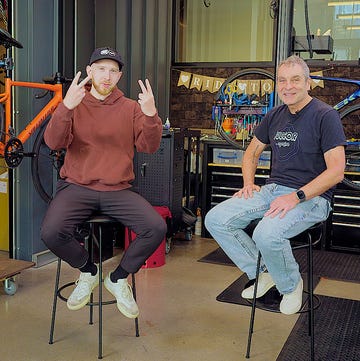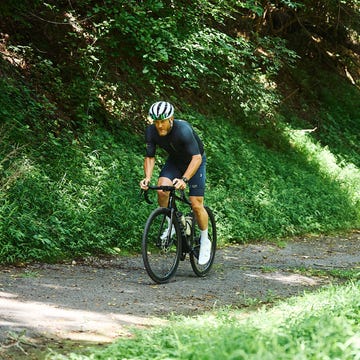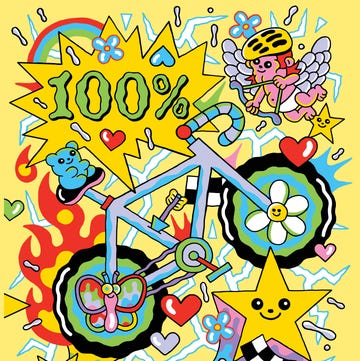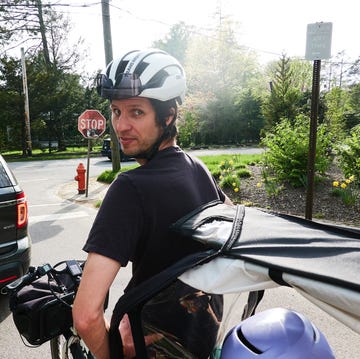Colnago has been on a roll in 2025. After launching the wild and weird Y1Rs aero bike, the iconic Italian brand has unveiled its updated all-around race bike, the V5Rs. As the name suggests, this is the fifth version of Colnago’s take on the do-everything, light-weight, aero-optimized, race bike.
At first glance, the new bike is very similar to its previous version, so much so that you would be forgiven for not being able to pick the two models apart immediately. The V5Rs is an iterative update rather than a giant leap forward. Given that Colnago openly admits that its V (and Y) series bikes are designed around the demands of Tadej Pogačar and his UAE Team Emirates teammates, the short 2.5-year turnaround between the V4 and V5, and the relative lack of visual design changes make sense.
The optimized V5Rs very much sticks to the formula that other well-regarded all-around race bikes (like the Specialized Tarmac SL8) follow. This boils down to shaving weight from the frame and fork while optimizing leading edges (such as the head tube, fork, and seat post) for aerodynamics. Essentially, Colnago made the V5Rs lighter and more aerodynamic without compromising the ride characteristics and stiffness that the pro riders liked from the V4Rs.
How much lighter? According to Colnago, a ready-to-paint V5Rs frame is 113g lighter than the previous model, in combination with another 33g saved from the new fork, that adds up to a total saving of 146g over the V4Rs.
Colnago says that in the smallest size, an unpainted V5Rs (without hardware) is 685g, or 1027g with the fork, making it the lightest production bike Colnago has made. This is a light bike, but it’s also the same weight as a painted size 56 S-Works Tarmac SL8 frame (685g).
Aerodynamically, Colnago claims that the V5Rs is 9 watts faster than the V4Rs at 31mph (50kph) at zero degrees of yaw. This might seem absurd to test for, but as pro race speeds continue to steadily creep higher, riders are routinely spending more and more time at or above 50kph. At a more humane 21mph (35kph), the V5Rs is 3 watts faster than the V4Rs.
Looking at a side profile of the V5Rs, it’s not apparent how Colnago managed to eek out these aero gains. But look at the bike's head on, and it’s very obvious how much narrower the V5Rs is compared to the V4Rs, particularly at the head tube, fork legs, and seat post. All of this adds up to an overall 13% frontal area reduction, which is a smart way to reduce the overall drag of the bike.
The V5Rs also get a slight update to it’s geometry to make it more accommodating to the modern riding positions preferred by many professional riders. Maximum tire clearance is unchanged at 32mm and at the bottom bracket riders will find a standard BSA threaded bottom bracket shell.
Pricing for the V5Rs is very premium. At least that’s the polite phrasing I’m choosing to use here. An Ultegra Di2 build of the V5Rs is $11,750, which is more in line with (if not more than) what other brands charge for a Dura-Ace Di2 build. A Dura-Ace Di2 build with Enve wheels (aka the team replica) is priced at $16,500 and is likely the most expensive bike being raced in the World Tour behind the Colnago Y1Rs. A V5Rs frame set is available for $6,250 and SRAM build pricing has yet to be announced.
How does it ride? Presumably good enough for Tadej Pogačar and company, but I can’t say as I’m still waiting to throw my leg over one. Hopefully, we’ll get a test bike from Colnago to evaluate soon.
Test Editor Dan Chabanov got his start in cycling as a New York City bike messenger but quickly found his way into road and cyclocross racing, competing in professional cyclocross races from 2009 to 2019 and winning a Master’s National Championship title in 2018. Prior to joining Bicycling in 2021, Dan worked as part of the race organization for the Red Hook Crit, as a coach with EnduranceWERX, as well as a freelance writer and photographer.


















